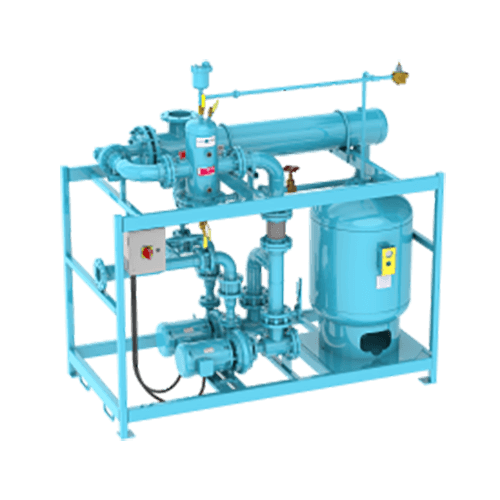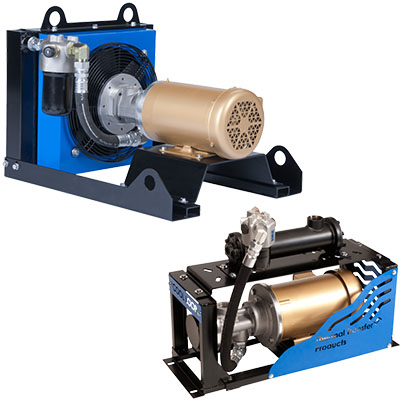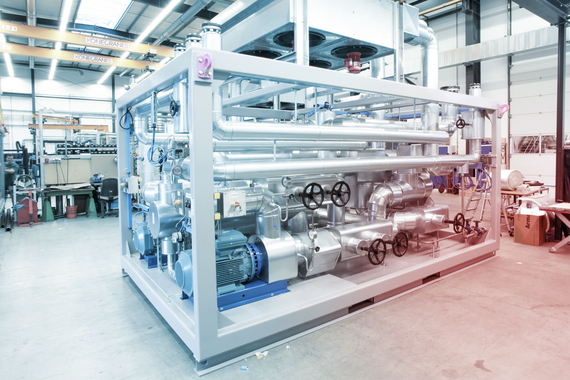The Role of Heat Transfer Equipments in Sustainable Power Solutions for the Future
Heat transfer systems are crucial in the mission for lasting power solutions. They maximize thermal power management, improving the effectiveness of eco-friendly modern technologies. By utilizing systems like transmission, radiation, and convection, these systems lessen power losses. Their role in solar thermal and geothermal applications is specifically substantial. As technologies emerge, the possibility for additional developments raises vital concerns concerning future energy methods. What developments will form the landscape of sustainable power?
Comprehending Heat Transfer Solutions

The Relevance of Thermal Energy Management
Reliable thermal energy administration is important for taking full advantage of power efficiency and lessening waste in different systems. By managing temperature level and enhancing Heat transfer procedures, organizations can noticeably decrease power usage and operational prices. Efficient management includes the execution of advanced innovations and techniques that check and control thermal problems within systems, making certain that energy resources are used efficiently. Additionally, correct thermal energy management adds to lowering greenhouse gas discharges, aligning with global sustainability goals. It likewise improves system dependability and efficiency, resulting in enhanced item high quality and longer tools lifespan. Inevitably, focusing on thermal power monitoring is a crucial step towards producing more sustainable energy options and cultivating a responsible method to energy consumption in property and commercial contexts.
Applications of Heat Transfer in Renewable Resource
While numerous renewable resource sources promise sustainability, the efficient application of Heat transfer plays a necessary function in their efficiency. In wind energy systems, Heat transfer is utilized for turbine component air conditioning, enhancing efficiency and long life. Geothermal power relies upon efficient Heat exchange between the planet's subsurface and the fluid flowing in the system, maximizing energy extraction. Biomass power processes also gain from Heat transfer, as it aids in transforming natural products into usable fuel via pyrolysis and gasification. Additionally, in hydropower, keeping excellent temperatures in tanks can enhance power result. Each of these applications shows the important relevance of Heat transfer systems in enhancing renewable resource modern technologies, ultimately adding to an extra sustainable power future.
Enhancing Solar Thermal Power Performance
As solar thermal power systems proceed to evolve, boosting their performance has actually become necessary for optimizing power output. Advances in Heat transfer innovations, such as boosted thermal storage materials and innovative Heat exchangers, play a substantial role in boosting performance. By utilizing innovative products that have superior thermal conductivity, systems can record and move Heat more properly. Additionally, incorporating radar that adhere to the sunlight's path warranties that collection agencies obtain suitable solar exposure throughout the day. Using nanotechnology in solar absorbers can better enhance power absorption prices. Integrating automatic control systems assists manage temperature levels and manage energy distribution efficiently, leading to minimized losses and enhanced general system effectiveness. These improvements lead the way for more lasting solar thermal energy services in the future.
Geothermal Heating: A Lasting Service
Geothermal heating presents a feasible alternative for lasting power, offering considerable environmental benefits through reduced greenhouse gas emissions. Its efficiency and cost-effectiveness make it an attractive option to standard heater. Nevertheless, obstacles associated with execution must be addressed to optimize its possible effect.
Ecological Benefits of Geothermal
Standard heating approaches contribute significantly to greenhouse gas exhausts, geothermal heating provides an engaging option that minimizes environmental influence. By utilizing the Earth's interior Heat, geothermal systems use a renewable resource source, considerably lowering reliance on nonrenewable fuel sources. This technique creates minimal carbon discharges, making it a cleaner alternative for domestic and industrial home heating. In addition, geothermal systems promote energy effectiveness, as they call for much less power contrasted to traditional heating unit. DVS Heat Transfer Systems. The utilization of geothermal energy likewise assists in minimizing air contamination, enhancing regional air high quality and public health and wellness. As a sustainable solution, geothermal home heating sustains climate modification reduction efforts, positioning itself as a vital part in the change in the look at these guys direction of a greener future
Efficiency and Cost-Effectiveness
How does geothermal home heating determine up in regards to performance and cost-effectiveness contrasted to typical heating unit? Geothermal home heating shows premium performance, usually attaining a coefficient of efficiency (POLICE OFFICER) of 3 to 5, implying it creates three to five units of Heat for every unit of power consumed. This performance translates right into reduced operating prices, specifically in regions with steady geothermal resources. First setup costs can be more than traditional systems; nonetheless, long-term financial savings on power bills and decreased maintenance expenses can offset these upfront financial investments. Furthermore, numerous federal governments incentivize geothermal systems through refunds and tax obligation debts, boosting their cost-effectiveness. In general, geothermal heating emerges as a sustainable and economically sensible alternative to more conventional heating services.
Execution Challenges and Solutions
Countless difficulties can impede the prevalent application of geothermal furnace, regardless of their clear advantages as a lasting energy remedy. High preliminary setup expenses often hinder property owners and capitalists, making financing a significant obstacle. Additionally, the geographical restrictions of appropriate geothermal websites restrict availability in particular areas. Neighborhood regulations and allowing processes can also complicate project growth, resulting in hold-ups. Public recognition and understanding of geothermal systems remain reduced, impeding acceptance. To attend to these difficulties, targeted education projects can improve public understanding, blog here while government rewards might relieve financial concerns. Working together with neighborhood authorities to simplify policies may promote smoother task approvals, eventually promoting the adoption of geothermal home heating as a viable, lasting power alternative.
Developments in Heat Transfer Technologies
Technologies in Heat transfer technologies play an essential function in enhancing energy effectiveness and sustainability. Advanced Heat exchangers and stage change products go to the leading edge of these advancements, providing significant improvements in thermal monitoring. These modern technologies not just enhance energy usage however also add to lowering ecological influence in different applications.
Advanced Heat Exchangers
Advanced Heat exchangers play an essential duty in improving power efficiency across different applications in lasting energy options. These gadgets help with the transfer of Heat between two or even more fluids, substantially minimizing energy intake in processes such as commercial heating, air conditioning, and power generation. Advancements in materials and layout, such as using nanofluids and compact arrangements, have led to boosted thermal performance and minimized size demands. Additionally, innovations in electronic monitoring and control systems permit enhanced procedure, further raising performance. By decreasing waste Heat and taking full advantage of energy healing, advanced Heat exchangers contribute to lower carbon impacts and sustain the shift toward eco friendly technologies. Their proceeded development is crucial for achieving worldwide energy sustainability objectives.
Phase Modification Products
The assimilation of phase modification materials (PCMs) right into Heat transfer technologies represents a considerable advancement in energy administration and efficiency. PCMs take in and release thermal power throughout their phase modifications, making it possible for effective temperature guideline in structure products and power systems. By storing excess Heat throughout optimal durations and releasing it when demand rises, PCMs add to fill changing and energy conservation - DVS Heat Transfer Systems. This ability boosts the efficiency of renewable resource systems, particularly in solar thermal applications. Additionally, PCMs can boost the thermal convenience of interior settings, reducing reliance on traditional heating and cooling methods. As developments in PCM solutions remain to arise, their duty click over here in lasting energy services is poised to grow, supplying encouraging opportunities for future research and application

Future Prospects for Heat Transfer in Lasting Power
As the need for lasting energy options remains to rise, the role of Heat transfer systems is ending up being significantly important in shaping future modern technologies. Technologies in layouts and products are anticipated to boost effectiveness in Heat transfer, lowering energy losses in various applications. The assimilation of sophisticated thermal storage space systems, such as stage change materials and thermochemical storage, will enable much better administration of power sources. Research study right into nanofluids and biomimetic Heat exchangers might additionally enhance thermal performance. Additionally, the fostering of clever technologies will certainly permit for real-time monitoring and adaptive control of Heat transfer procedures. These advancements are positioned to greatly add to the overall efficiency and sustainability of energy systems, leading the way for a more energy-efficient future.
Frequently Asked Questions
Just How Can People Implement Heat Transfer Equipment in your home?

Individuals can execute Heat transfer systems in the house by setting up energy-efficient home appliances, utilizing radiant heat, and enhancing insulation. These steps enhance power efficiency, minimize expenses, and advertise lasting practices in residential settings.

What Are the Expenses Connected With Setting Up Heat Transfer Systems?
The prices linked with mounting Heat transfer systems vary widely, generally incorporating tools, installment labor, and upkeep. Aspects such as system type, home size, and local guidelines substantially affect the general expenditure included.
Are There Government Rewards for Heat Transfer System Installations?
Government incentives for Heat transfer system installments differ by region and can include tax grants, credits, and refunds. These monetary advantages intend to motivate fostering, inevitably promoting power effectiveness and decreasing environmental effect within communities.
How Do Heat Transfer Systems Effect Power Expenses?
Heat transfer systems especially influence power expenses by maximizing power performance. By boosting the transfer of Heat, these systems reduce power usage, resulting in reduced utility prices and creating an extra sustainable strategy to energy management.
What Upkeep Is Required for Heat Transfer Systems?
Maintenance for Heat transfer systems includes routine examinations, cleaning of elements, inspecting liquid degrees, ensuring appropriate insulation, and changing used components. These tasks aid preserve efficiency, avoid failures, and prolong the system's operational life-span.
These systems promote the activity of thermal power from one medium to one more, making it possible for the transfer of Heat for air conditioning, heating, or energy generation objectives. Geothermal power depends on reliable Heat exchange in between the planet's subsurface and the fluid circulating in the system, maximizing power removal. Additionally, geothermal systems promote energy efficiency, as they require less power contrasted to conventional home heating systems. Advanced Heat exchangers play a necessary function in boosting energy performance across numerous applications in lasting power options. Heat transfer systems especially affect power expenses by enhancing energy performance.